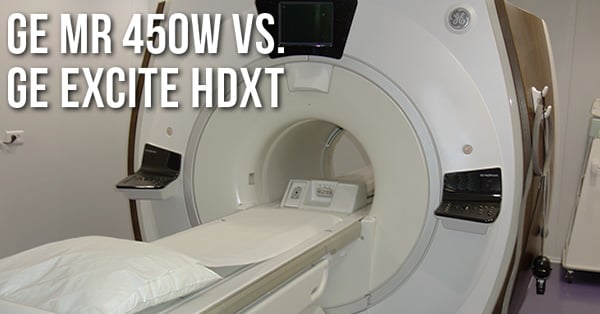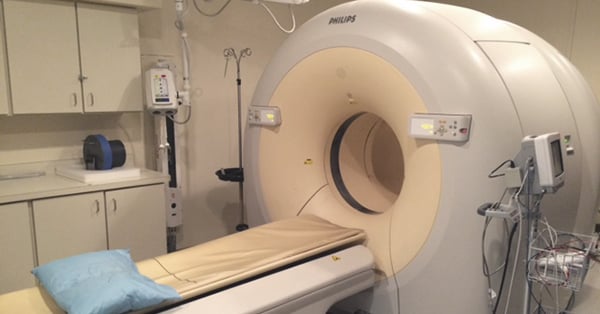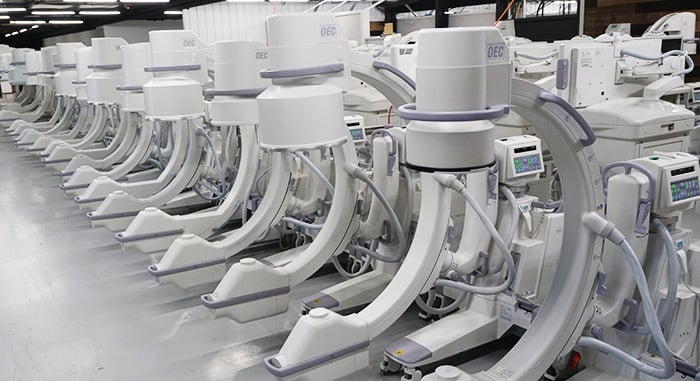
Amid the slew of MRI options available to buyers on the secondary market, one is all but certain to come across a number of models from industry juggernaut, GE. Used/refurbished GE MRI systems occupy a spectrum of vintages, configurations, technology, and prices. So, to help MRI buyers better understand what their options are, we've decided to compare two systems that live in neighboring areas of the spectrum: the GE EXCITE HDXT and the GE MR 450W. Keep reading to see what's different, and where each of these models shines.
What's Different?
There are plenty of differences between these two models, but some of them will make a bigger difference to the average user than others. A few of the most prominent differences are:
- The HDXT has a 60 cm bore while the 450W has a 70 cm bore
- The 450W is the first model to use GE's improved OpTix RF system
- The EXCITE HDXT is available in either 1.5T or 3.0T configurations, while the 450W is only 1.5T
- EXCITE HDXT systems range $150,000 to $250,000 (plus installation) in price while a 450W ranges $400,000 to $500,000 (plus installation)
- Newer GE MR 450W systems come with the GEM suite. Somewhat similar to Siemens' TIM (Total Imaging Matrix) technology, this allows each GEM coil to be used individually, or in combination with other GEM coils for whole-body imaging without the need to move the patient or exchange coils.
Where the MR 450W Wins
The 70 cm bore of the MR 450W, along with its "feet first" imaging capability, gives it an advantage in patient comfort. Its OpTix RF system improves image quality by creating a higher ratio of signal to image noise- a very important clarity benefit for cardiac and neurological studies.
While the EXCITE platform topped out at 18 RF channels, the Optima 450W with GEM comes with 32 RF channels- a feature that can significantly boost speed and image quality.
The 450W also has an edge on the HDXT in helium consumption, as the model is the first to set aside GE's long-standing CXK4 magnet design for a new, more efficient design. Simply put- because it is a newer system, the MR 450W has the advantage of more years of advances in MRI technology.
Where the EXCITE HDXT Wins
While it's true that the HDXT isn't as technologically advanced as the MR 450W, the system can be a strong value for imaging facilities in other ways. The HDXT is far more readily available on the secondary market, and at significantly lower price points. If the typical workload of your future MRI will be more generalized, the HDXT offers a more affordable entry point.
See Average MRI Machine Pricing
The Takeaway
If you have the money, the MR 450W is late-model technology capable of performing whole-body scans in much less time and with more convenience for both technologist and patient. It's wonderfully-suited to cardiac, breast, and neurological studies, and its wider bore provides greater patient comfort. If your budget is subject to more limitations, or if you intend to perform mostly orthopedic studies, the EXCITE HDXT is a solid alternative that won't see you paying for capabilities above and beyond what you'll typically use.
Whatever MRI model your facility ends up choosing, our team is standing by to help you find the best fit. To learn more about either of these systems, or other MRI models, use the button below to explore your options!

Steve Rentz
Steve Rentz is the Product Manager for MRI Scanners at Block Imaging. Steve's goal is to earn each customer's trust and business by specifically addressing the needs of their unique project. When Steve is not helping customers with their MRI needs, he enjoys running, swimming, and woodworking.






